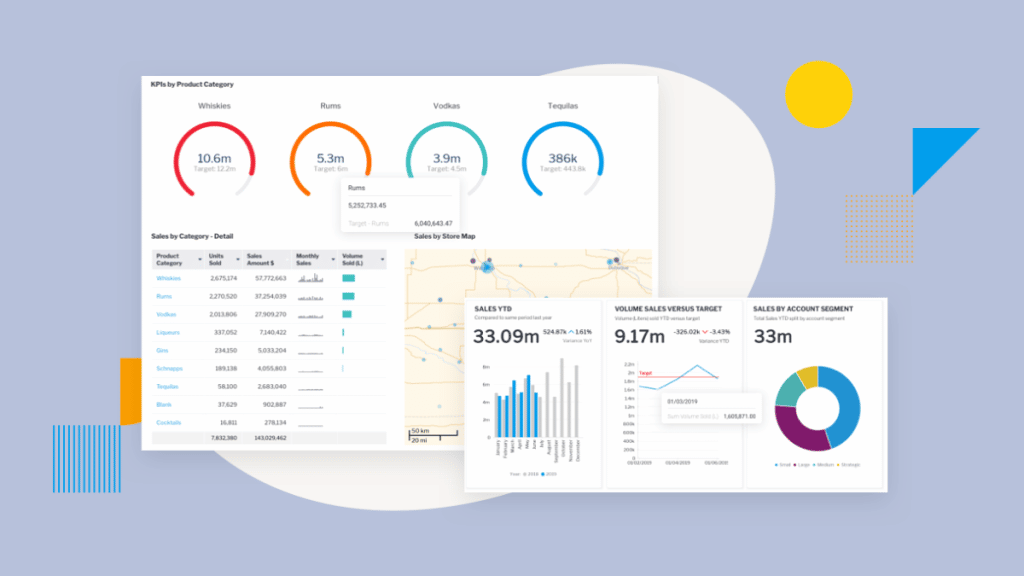Whenever you’re producing new software, focusing on the right KPIs (key performance indicators) for your team is essential. Software development in general is a very fluid process and there is a lot that can potentially change, especially in those early days, that can impact a lot of the choices you assume that you’ll be making later on. Therefore, you need to know about certain elements as early as possible so that you can adapt as necessary.
KPIs are also important because they help you identify any issues as early on in development as you can. It’s one thing to run into a problem when it comes to factors like velocity or cycle time – it’s another thing altogether to not learn about it for weeks and months and to have to pick up the pieces afterwards.
All told, there are a number of KPIs that you should focus on when producing new software, all of which are more than worth a closer look.
1. Velocity
This is a KPI that is commonly used alongside the Agile development methodology. In an overarching sense, it allows you to track and thus estimate the future performance of your team based on past performance.
Essentially, it allows you to take that which you know to be true – previous outcomes – and use them to anticipate future ones. It’s helpful for setting goals or simply understanding how much work you can realistically give a team during a sprint.
2. Cycle Time
Cycle time, on the other hand, measures the total amount of time it will require to complete a particular goal from start to finish. In most development scenarios, what you’re really tracking is the total amount of time you need to implement a new feature.
This is also one of the major reasons why preview environments are always recommended. Preview environments help teams increase both their cycle time and thus their velocity by reducing the amount of time it takes to not only develop new features, but to merge them all together into a cohesive whole. They can also help to prevent a situation where your release may be held up by a new feature that turns out to be buggy, can help teams save time so that they can focus on more important matters that truly need them, etc.
3. Flow Efficiency
Another KPI that can help enormously when it comes to development effectiveness is called flow efficiency. This helps project managers better understand the relationship between the amount of time people spend working and the amount of time they are waiting on someone else to complete a task so that progress can begin.
Many new software has code that feature dependencies, for example – meaning that Developer C can’t begin his or her work until Developer A and Developer B have completed theirs. Sometimes, this is an indication that progress has fallen behind. Oftentimes, it’s an indication that is taking too long to get approval from key stakeholders.
Nevertheless, it’s another way to take a closer look into how progress is actually carrying on, all so that you can make adjustments as necessary.
4. Code Coverage
Obviously, it is always important to pay attention to code quality during any new software development project. By showing you how many lines of code (or blocks of code) are being executed during automated tests, code coverage helps you do precisely that.
Tools exist that will show you all of the lines of code that are called at a minimum of one time during an automated test. The percentage of those lines relative to the total number of lines of code you’re working with is called code coverage.
For a bit of context, however, understand that you shouldn’t be attempting to get this metric to 100%. Doing so wouldn’t mean that you’ve properly tested your code as not all lines of code are going to be called during manual tests, let alone automated ones. However, the percentage of code you have that falls outside of your code coverage does give a solid indication of what you should be taking a closer look at regarding testing in the future.
5. Code Churn
Finally, we arrive at the concept of code churn – that is to say, the tracking of the volume of code that was added, removed, or changed between various parts of the development process, prior to the official release of the product.
This can be helpful for a few different reasons. For starters, graphs and other reporting tools can help you spot instances where someone’s approach to development may not be focused enough. It can also show you situations where massive spikes in code changes have occurred. Why exactly is that happening, especially as the development process continues on?
All of this needs to be carefully investigated, again so that you can spot trends and patterns that otherwise would have gone undiscovered and make adjustments accordingly.
Overall, these are just a few of the crucial KPIs that you and your teams should be monitoring all throughout the development process. But it’s also necessary to understand that this is not something you “do once and forget about.”
You must be proactive about understanding where you are in terms of software development and how far you still have left to go. Only then will you be able to develop the type of process that helps positively impact the overall success of your efforts.
